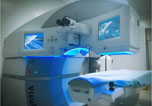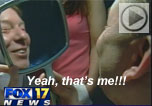- Over 55,000 LASIK and cataract procedures (including on over 4,000 doctors)
- The FIRST center in TN to offer Laser Cataract Surgery
- Introduced bladeless all-laser LASIK to the state
- Implanted the state's first FOREVER YOUNG™ Lens
- The first surgeons in the US to perform a new Intacs surgery to treat keratoconus
- Helped patients from 40 states and 55 countries
- International referral center for cataract surgery and LASIK complications
- Read Dr. Wang's book: LASIK Vision Correction
Why did you decide to have LASIK? Why did you choose Dr. Wang? How has your life changed since your LASIK procedure?
What is your advice for people considering LASIK?
Click to read more
| Home | Print This Page |
Understanding Problems with Presbyopic IOLs: Look to the Cornea
Featured Article
by Ming Wang MD, PhD
Presbyopic IOLs—ReZoom® (AMO), AcrySof® ReSTOR® (Alcon), and Crystalens® (Bausch & Lomb)—have structural features that demand a higher degree of corneal regularity than monofocal IOLs.
Sometimes, as we improve the function of one part of the eye—for instance, by improving the optics of intraocular lenses (IOLs)—another part of the eye can emerge as the new rate-limiting step in vision. When a patient experiences a visual problem following cataract surgery and IOL implementation, we most often think that something is wrong with the lens and/or the surgery. However, some of the problems that we encounter in multifocal IOL patients are not a function of the IOL or surgery itself, but rather of the non-lens parts of the anterior segment, including the cornea, anterior chamber, and pupil.
Traditional monofocal IOLs have a single spherical or aspheric curve that spans the entire lens. The optics of the lens are relatively crude and, therefore, fairly insensitive to minute aberrations in other parts of the visual system such as the cornea. Even if the cornea is slightly irregular and misdirects the light beam by a small amount, causing light to strike at a slightly different position, it will matter very little thanks to the spatially invariant structure of the lens.
Multifocal IOLs, however, have spatially finer features, so the light must strike in a more precise spot; the misplacement of the beam by just a few microns can make a significant different in vision. Therefore, presbyopic IOLs demand a higher degree of corneal regularity than monofocal IOLs.
In order to obtain the best possible outcomes with presbyopia-correcting IOLs, surgeons must consider corneal symmetry, as well as corneal steepness, anterior chamber (AC) depth, and pupil size. So, while surgeons may deem 99% of corneas “normal” for a monofocal IOL, with a multifocal IOL, they may consider 90% of corneas normal, with 10% being rejected for irregularity sufficient to put the patient at risk for visual problems after implementation.
Currently, there are three presbyopia-correcting IOLs on the market: ReZoom® (AMO), AcrySof® ReSTOR® (Alcon), and Crystalens® (Bausch & Lomb). The optics of these individual lenses will also affect the outcome of IOL implementation, and therefore, surgeons need to consider both the specifics of the patient’s eye (corneal regularity, corneal steepness, AC depth, and pupil size), as well as the optics of each type of lens in order to determine if a multifocal lens is likely to provide good vision, and if so, which lens maximizes that chance of success.
Click here to read the full article online
Our new texbooks
A 501c(3) charity that has helped patients from over 40 states in the US and 55 countries, with all sight restoration surgeries performed free-of-charge.




















